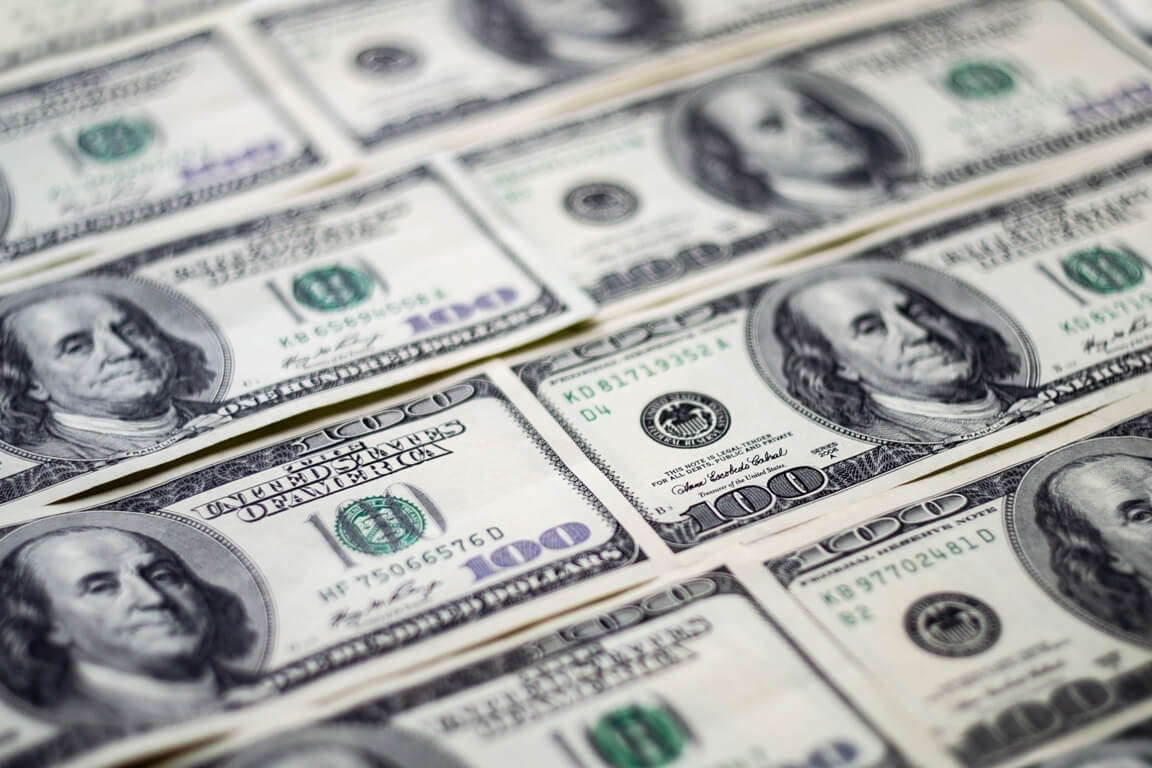
The dollar is under pressure as traders await US debt data
The forex market is in a state of flux as traders try to anticipate the direction of the major currencies. On Monday, the euro regained some of the ground it lost on Friday after a long-legged Doji pattern indicated indecision among investors.
However, the near-term bias for the single currency remains bullish, as the price action has stayed above the psychological support level of 1.10 for the fourth straight day.
Here are some of the key developments to watch in the forex market:
Euro retains a positive tone despite the drop in German industrial production
Euro regained momentum on Monday, despite a significant drop in German industrial production in March. The single currency continues to maintain a positive stance, with the near-term bias remaining bullish as price action stays above 1.10 support for the fourth day straight.
For instance, it went from a -3.4% fall to a 2.1% rise in February. Besides, the euro increased almost 16% from its September lows. It was up by 0.29% to $1.10505 on anticipation that the European Central Bank will keep interest rates high for a longer period of time than the US Federal Reserve.
Even though March’s rates were not so promising, the currency has kept a positive tone, underpinned by the weaker dollar on expectations of a peak in Fed rates and speculations of a possible start to cutting rates.
In the near term, the action remains directionless while holding within the 1.0942/1.1095 range for the fourth consecutive week. A break in either range boundary could generate a fresh direction signal. The single currency is expected to maintain a positive stance while the market prices for rate cuts this year, with more information from US loans and inflation data, while German recession risk weighs.
An awaited firm break after the 2023 peak
The bullish scenario for the euro requires a firm break of the 2023 peak at 1.1095 to signal bullish continuation and expose targets at 1.1193/1.1274 (200WMA/Fibo 61.8% of 1.2349/0.9535). However, the loss of the 1.10 support level would dent the near-term structure, with a sustained break of pivots at 1.0960/42 to revive bears and generate an initial reversal signal.
Fed and ECB Policy Changes
Last week, the Federal Reserve announced a 25 basis point increase in interest rates. However, the central bank also sounded more cautious than its peers on the outlook, dropping guidance about the need for future hikes.
This move has led to US interest rate futures pricing in about a one-third chance of a rate cut as soon as July, according to the CME FedWatch tool. Despite stronger-than-forecast US jobs data released on Friday, investors are still betting on a possible rate cut in the near future.
Similarly, the European Central Bank (ECB) slowed the pace of its interest rate increases last week but signaled more tightening to come. The ECB announced a cut in its growth forecast for the eurozone, but this did not lead to any immediate changes in policy. Analysts are keeping a close eye on the central bank’s future decisions to see how it will address the challenges facing the eurozone.
Dollar Index under pressure
The dollar index, which tracks the value of the US dollar against six major currencies, was down 0.25% at 101.06. Last month, it hit a low of 100.78, the lowest it has been in a year. The dollar has been under pressure in recent months due to concerns over US political uncertainty and a more dovish Fed stance on interest rates.
The dollar began the week under pressure on Monday, with traders betting it might have peaked along with US interest rates while keeping a wary eye on looming inflation and loan data.
What was the cause?
Last week, the Federal Reserve raised rates by 25 basis points; however, the Fed conveyed a greater degree of caution than other institutions when addressing the outlook, as it did not mention the probability of any more rate hikes in the future.
CME FedWatch tool projections showed a thirty percent possibility of a rate reduction before July, despite the recent higher-than-expected US employment records published last Friday, which raises uncertainty on the necessity of such a cut.
Sterling is in focus ahead of an expected Bank of England rate increase
Sterling has been a standout performer in the forex market. It went up a fraction on the day and hovered at an 11-month high of $1.2652, in particular ahead of an expected Bank of England rate increase on Thursday.
The pound has also been firming versus the euro, which was last at 87.36 pence, dipping to 87.11 pence on Friday, its softest against the British currency this year. Investors are eagerly awaiting the Bank of England’s rate increase on Thursday and are expecting a positive outcome.
Forex market overview: What happened
The forex market is in a state of flux, with traders trying to anticipate the direction of the major currencies. The recent policy changes by the Fed and ECB, as well as the state of the dollar index and the sterling’s strength, have all contributed to the current state of the market. Investors are keeping a close eye on upcoming events that could affect the market and are taking positions accordingly. The euro regained some of the ground it lost on Friday, but the near-term bias remains bullish.
Meanwhile, the dollar is under pressure on expectations of a peak in US interest rates. The pound is in focus ahead of an expected Bank of England rate increase on Thursday, with the pound also firming versus the euro. As the forex market continues to fluctuate, traders will need to keep a close eye on economic data and policy decisions that could impact currency movements.




